Podcast: Download (Duration: 25:19 — 23.3MB)
Get Notified Of Future Episodes Apple Podcasts | Spotify | Amazon Music | Android | Blubrry | Gaana | TuneIn | Deezer | Anghami | RSS | More
In this case study:
01:50 – A quick flashback
02:43 – The stats of the event
04:26 – The planning phase
06:27 – What Jake did first
07:13 – 5 emails, 2 weeks
08:45 – The pre-December countdown
09:27 – Lessons from a master interrogator
12:26 – The most powerful thing they did
13:31 – On to production
15:27 – The importance of languaging
18:14 – Now comes the fun part
20:16 – A look at the results
22:23 – The technical part: Facebook ads
(Part 2 of this recording and other powerful business resources are available for members: click HERE)
Tweetables:
Matching branding and matching messaging [Click To Tweet]
The product is key. [Click To Tweet]
The stats and strategies behind marketing a live event [Click To Tweet]
Transcription:
James: This first session is the most anticipated slot of the entire event according to the survey, and I’m not surprised. When I had a little glance at what you’re about to discover, it actually blew me away, some of the stats in this.
I think the overriding feature about this is it is real. You’re a part of it, you’ve experienced part of the process in some way, the fact that you’re here, and we’re going to lift the curtain on my business and I’ve given Jake full permission to go into the behind the scenes. I won’t say what Nathan said yesterday, “Interrogate the back end”, for that was very unfortunate.
I’ve said to Jake, “You can go and log in, get whatever stats you need, and just put it out there, whatever they are, even the mistakes.” So we’re going to see a real case study of how this event was marketed. So I want to welcome up Jake Hower, a brilliant, technical, funnel expert.
Jake: Thanks man. Cheers.
James: Have some fun!
Jake: Cool. So I want to take you back to 2011, it was FastWebFormula 4.
I was very green. This was my first online event, and I was sitting somewhere around there. I was sitting next to Ryan Spanger, who was in a very similar position. We both had real businesses and this was our first event. So that was my first foray into this community and into the online space.
Now fast forward to 2014, March, the event had just finished.
I was sitting here, just behind me in a surf with James, and he suggested that for the 2015 event that we should do something like this. That essentially brought me on stage today, looking at the funnel and building this out with James.
Some stats
Raise your hand if you think that this is going to be complex. Fantastic. Cool. So I’ll run through some of the stats.
43 emails were created and sent during the campaign.
Nearly 300,000 emails in total were sent.
13 videos were shot, specifically for the event funnel.
121 Facebook ads were created over the course of the six months or so that we were actually marketing the event.
Blog posts including podcasts; there were 19 in total that hit James’ site that had a call to action for this particular event.
This was a side effect. So a cross-sell was that one of the things we’re going to detail in a little bit in a second where there was 18 new members added to SuperFastBusiness because of the purchase of a ticket here, and that’s so far.
So if you’re here and you’re not yet a SuperFastBusiness member, you have 2 months where you can actually access the community so I’d suggest you do that. If you don’t have that email anymore, just shoot an email to James and he’ll get you access.
And 172 attendees.
At the point that I started doing this, I’d only ever done this for myself internally for my own business, for my travel agency, for a few years, my software service. I’d never done this externally before so what you’re going to see today is basically me breaking it down. We’re going to step through in a linear fashion exactly what I did.
I guess at the start, we broke it into 3 main sections: the strategy or the planning, the production, which is where Ryan and a few others come into it, and then executing on it, and then we’ll run through some results.
Planning Stage
From the planning perspective, the first thing that we did is had a couple of conversations.
So the first conversation was with James, and I just wanted to understand what the goal of us doing this was. Literally, the main goal was, James’s instructions were to just get more people at the event this year. No sort of specific number. “Let’s just get more people at the event, and don’t take up too much of my time.”
The next conversation I had at this point was with Ryan, and we had a couple of conversations actually. We were just talking about different ideas that we had about how we could potentially market this. So we’re talking, this probably was mid last year, conversation with James, conversation with Ryan. At that point then, I went back and I started, obviously needing to build out the sales sequence, so what I thought was going to be the sales sequence, so that we could move in to the next steps of production.
You’ve got some diagram software up here. I wanted to include this here because if you’re trying to map out something, a funnel or a sequence, the inclination for me, I’m relatively I guess, I love tech, so my inclination would be to come and try and do it online. What I found though is that this is completely the wrong thing to do. These tools make you focus rather on the content and what you’re actually trying to produce.
You end up focusing on lining up and connecting the things that are making it really pretty. So they are very counter-productive to use, one of these online tools. The only reason you’d want to use one of these is if you had to present it to a client and you wanted to make an impression. But even then, I believe they’re quite useless.
I guess the best tool that I have that anybody has at their disposal is a notepad, or it’s a whiteboard and it’s one of these. It’s a phone. So that’s essentially what we use.
This is the first thing that I did. We had some deadlines, we had the event starting on the 5th of March, we had an early bird deadline of the 31st of December, and we knew that we wanted to include a few different campaigns.
The first campaign, we wanted to do a really focused one, was an offer for existing SuperFastBusiness members. So that was pretty much running from about mid-September to the start of October. Then the main sales sequence was going to be broken into 2 slots; so the pre-December or the pre-2015 and the post-2015.
This is the first thing I did. I mapped out the sales funnel for what I felt was how it was going to work.
Then from that point, I started going down a little bit further down the pipeline. So we take that SuperFastBusiness member early bird and I map out what I think we’re going to include in that particular funnel. So at this point, it’s a 5-email sequence and it’s over the course of 2 weeks basically.
Then, once that’s done, what I’ll start doing is looking at the low-hanging fruit. Now for me, the low-hanging fruit really is looking at where there are points where someone’s shown an interest. So rather than forcing everybody into this sales funnel, we only want the people who have shown some sort of interest and are looking like they’re going to be the people that are going to purchase a ticket at some point.
That for us was visiting the checkout page, they visit the sales page, and anyone who pushed the button to go through to the checkout page was added to essentially these 4 sequences. So if they didn’t purchase, they were added to an abandoned cart sequence, they were added to the early bird, and then the normal countdown sequence, and also to Facebook retargeting. We’ll into all of this in detail in just a second.
The main sequences are pretty simple. One of the biggest things with James obviously is that he’s a content machine, so we didn’t really need to do a lot of amplification in creating new content because there’s always going to be that. All we’re basically doing is we’re just essentially having these little trigger points throughout.
This is the pre-December countdown. It’s essentially an email a week, which was directed to a video; James face-to-camera talking about a different aspect of coming to the event. Ryan will go into a bit more detail in that in his presentation but it’s essentially focusing on lifestyle, on networking. So these are all trigger points that I knew personally as a member of this community that appeal to me about coming to these events. So we’re trying to essentially just appeal to the story of the attendees.
Does anybody know the name Eric Maddox? Nope. OK. On Monday, I had the pleasure of spending a couple of hours with a guy named Eric Maddox. He is an interrogator, in the US army he was. So he’s done 2700 interrogations, he’s got a close rate or a success rate of 64% when the overall close rate or success rate across all interrogators, across all of the US is 4%.
He was the guy who was responsible for catching Saddam Hussein. Almost half of those interrogations were conducted on a raid with the special ops teams, like they’d get the C4, put it on the door, blow it out, go and secure it, drop all these I think they call them 9-bangers, which are basically your fireworks that sound like machine guns. They’d lock everybody down, they’d segment off the females and they’d have like 4 or 5 males. His job was to then come in and gather intelligence.
I went into this expecting that we’re going to be starting talking about waterboarding, or torturing. He was asked the question, “Why have you been so successful? Why have you been able to make this work?” And he said one thing, he said, “My prisoner has a problem and I’ve got to solve his problem.” So the prisoner, at the point where they’re still in the house, their problem means that they don’t want to be taken away. So he used everything at his disposal to essentially convince them that if they gave up the information, he would leave them there.
Now that for me was a massive a-ha because an abandoned cart for instance – somebody has come to your checkout page. And for whatever reason, they’ve not purchased. To me that’s a problem. And all you have to do is solve that problem.
So the assumption would be that they haven’t purchased because they don’t want to attend, right? That’s the natural thing to assume. You shouldn’t assume anything. So the way you solve that problem is by giving them the opportunity to come back and complete that purchase. This sequence, it’s 2 emails, it’s 2 days, will bump up your close rate by 20% for each of those emails. So you’ll get an additional 20% come in and actually complete the purchase.
I’ve seen that across a lot of industries and that’s pretty standard. Sometimes, it’s slightly lower, sometimes slightly higher; But those 2 emails, nothing more than a sentence or 2, just saying, “Hey, I saw that you didn’t complete your purchase. Can I help with anything? If you want to go back and go ahead and purchase, here’s the link.” That’s all you need to do.
This is probably the second most powerful thing that we included in this particular campaign. The first most powerful thing that we did was this.
When a purchase was made, we basically looked at James’s tags in Ontraport and we worked out if they were a member or not. If they were already a member, we sent them an email, which was essentially inviting them to bring a friend for the same price. If they weren’t a member, they were sent a couple of emails inviting them to join SuperFastBusiness for a couple of months’ trial.
As I said, event, a thousand dollars, lifetime value of a SuperFastBusiness member, in excess of $2,000. So that’s essentially the sequence that we sent for both of those. It was wait 30 minutes, send an email, wait 7 days, send a follow up email.
So the key things there, essentially you’ve got the sales sequence, you’ve got the abandoned cart sequence, and you’ve got that onboarding sequence.
Production Stage
Production. So this is I guess, it becomes less about what I was doing and more about what everybody else was doing here. There are 4 main mediums that we used.
So we used videos, podcasts, emails and Facebook ads.
The videos, Ryan and James were responsible for. Podcasting of course is James, and it was pretty much all of us, all of the speakers that he interviewed. Email was a combination of what James is sending as a result of his blog post and some of the campaign emails that we created. The Facebook ads that we created were Lenny Ramirez, who’s a SuperFastBusiness member as well. He’s in the community.
In terms of coordinating this with Ryan I had an idea of what we should be potentially including with discussions with him. I sent him this. So I basically gave them the menu of the videos that we’d need, and in 1 day, Ryan flew up here, shot all these videos, got all the footage, and so it was easy as a day of Schramko’s time.
Ryan shot the videos and then went back and got edited by his team. That’s all they needed of this, made it incredibly easy. I shot James an email afterwards and said, “Can you get those videos loaded? Get your team to load those videos.” That’s essentially the result of all those videos. His team come back a day or two later, and with all the links and all the titles of those particular videos.
Podcasts. Of course as I was saying, essentially he’s a master of leveraging content. This is fantastic in terms of the sales sequence because he’s talking to people who are going to be on stage, and that just happened over the course of the last 3 months leading up to the event. So that was James’s responsibility. The key thing here though I think is that it wasn’t extra work. It was part of his regular content schedule.
This is an example of an email that I created. So this one is for probably the third email or the second email in a sequence for the members’ campaign. What’s important here I think is probably the languaging. I think one of the most important things to understand is that you’ve got to match your languaging and you’ve got to match everything about it. So this is James’s personality, he sends short emails. It’s all about the content; it’s all about the videos. Most of these emails are very short, very sharp, very concise, straight with a very simple call to action.
This one I guess James highlighted at some point last year in it being quite effective because I think one of the keys is James doesn’t like to show what someone’s losing, I think something like that. So just the languaging is just slightly different. We’re laying out all the price points and we’re giving you the opportunity to choose which price point you’re going to purchase the ticket at.
So we’re not subtracting, we’re basically laying it out. We’re saying, “Now is the best time to buy. But if you can’t buy now the price increases.” So instead of saying, “You need to buy now.” So basically taking it away, you have to buy now, you have to buy now, you have to buy now. It’s just like laying it all out; making it really clear, transparent. I think that’s probably one of the keys to the way that James promotes, not promotes, he just tells stories basically.
The ads. So once all this was done, we basically just had a conversation with Lenny about our email, and we said, “This is what we’re trying to do. We’re going to have these retargeting ads. We want to retarget all the different stages of the funnel.” Lenny took over from there. He’s a very smart guy, he knows exactly what’s needed, and so he basically managed the campaign over the course from October through to right now. I’ll show you a few more of his ads and how he actually structured those, a little bit later on.
Again just recapping this. Choose the mediums that are going to suit the style of the person who’s actually running whatever it is or the campaign. Matching branding and matching messaging. So very key things I think. Kevin will speak a lot about that later.
One of the keys or one of the successful things about this campaign isn’t the campaign itself, it’s the product, as James has mentioned. If you get the product right, and if you get the messaging around that right, everything else is going to make it really easy and it’s just going to be just a little boost. It’s going to make things just a little bit even easier. So get that right first and then worry about all of this later.
Cool. So this is the fun part. The important thing we want to do is to be able to track with a very simple tool called Improvely. We’re basically creating tracking links for all the different ads, etc. etc. We don’t go into granular detail in all this but it’s fantastic from the perspective. It’s just simple. The reports you get out of it, all on one page, really simple to consume, really simple to install on your site and create links.
This is the email I sent to James asking him to get all those videos up on landing pages. That was probably 5 seconds of James’s time to send an email to his team. I got an email back from him the next day or 2 days later with them all loaded. Leverage.
Execution Stage
OK. From my perspective in the execution, this is inside his Ontraport account. This is pretty much it. These were the sequences I created. This was a few hours’ work, and there are a few different things technically to put them into these particular sequences but that’s it. It’s really very simple. Not much at all.
That’s an email sequence. Note there the open rate, open rate and click-through rate. It’s incredibly relevant. These are highly engaged members, and it shows.
That’s an example of basically just loading up the email. What I’m trying to highlight here is it’s really simple. That’s probably the key. If you’ve got a confusing funnel, it’s probably not going to be a successful funnel. Most businesses I’ve seen, in fact even all the way up to Apple, have incredibly simple business models. I think the key to scale is actually simple. And it works.
Results
So we go back to that early bird offer.
Yup, all the emails that were included there.
So you can see their great open rates. Here are the results as of 30 September 2014. 38 ticket sales that covered the event costs, covered the deposit on this place and everything else. So we had 38 ticket sales before it went pretty much on sale to the public.
This special offer that we made, the cross-sell to the community.
That’s an email. Very simple, James’ style. It basically directs to a page where James is speaking to camera. Again, you might see some of this with Ryan.
This is interesting. That top chart there is ticket sales. So you’ll see the spike at the end of September. You’ll see a spike at the end of November. Again at December, January, February, they coincided with early bird tickets rising. The one below it, you’ll see it follows a very similar pattern except there’s maybe like a day or two where the conversions happen. That’s the membership. That is a clear correlation between sales and again redemptions of the SuperFastBusiness membership.
I think this is again Nathan talking yesterday about recording everything and keeping it and reusing it. Master. James is a master at this. This is previous event videos. This was included in those 19 posts about this event. It’s reusing old videos. How fantastic is that? It’s content, it’s great content for his community, and there’s just a very small call to action about coming to this event.
Talking about his PSs. That’s an example. So just that one line below any email. It’s just his old content like he normally does in style, and then he has a PS at the end.
OK, Facebook ads. I guess these are all the Facebook ads that we created. So you’ll see there, I guess this is probably the most technical part of this entire funnel. The reason it’s so technical is because Lenny looked after it. I would have basically put in place the funnel remarketing and it would have been set up once and that would have sufficed for the entirety of the campaign.
But Lenny went a little bit further and he started doing things like he was creating ads for each of those blog posts, so he’s basically amplifying. Amplifying mainly to the internal community. So to James’s lists and to those people who have visited the checkout page.
So as a result there, probably the key thing is that it was not a lot of cost. So $1,400 over 6 months. 27 website conversions. That conversion value is actually incorrect. That’s based on tickets being $500, which for most of the campaign we know they weren’t.
Like the actual spend versus conversion, there is as clear as day, absolutely incredible. That’s probably one of the biggest takeaways for me, is the Facebook remarketing or funnel remarketing is something that everybody should be looking at doing. And it’s simple to do.
The different types of ads. On the left, this one was basically to those that hadn’t actually purchased the ticket but had visited the checkout page. You can see that’s another example to the right. Some of these ads went out to the wider community. There wasn’t a lot of promotion outside of James’s already, the list that he already had, but there are a couple of examples there.
For the rest of this video and recordings from ALL the SuperFastBusiness Live events, click HERE
For more episodes, subscribe to the show on iTunes
Share your thoughts: What was your biggest takeaway from the presentation?
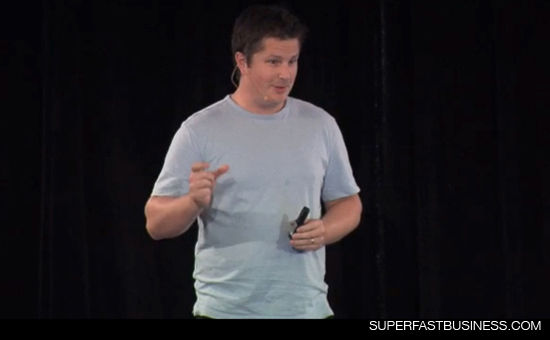






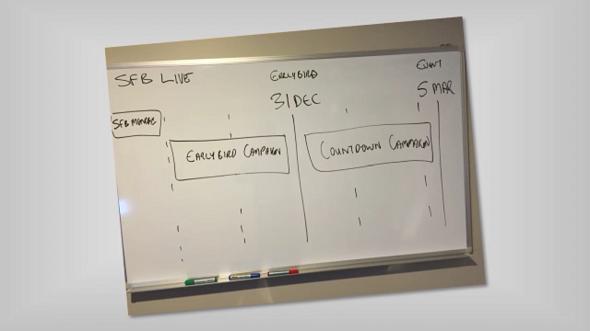
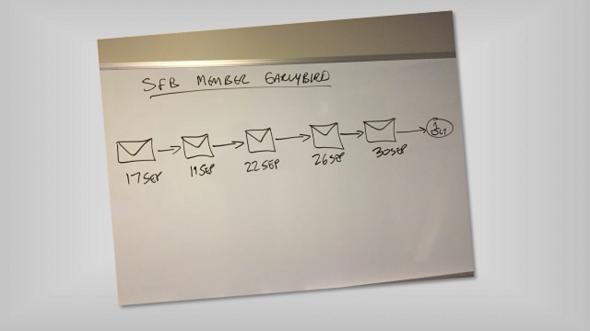







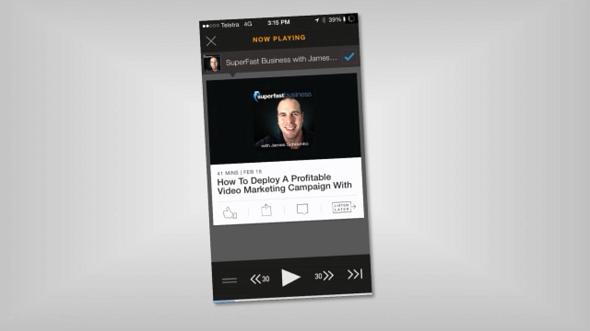




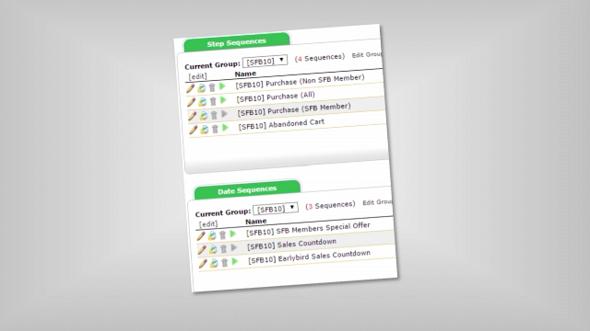





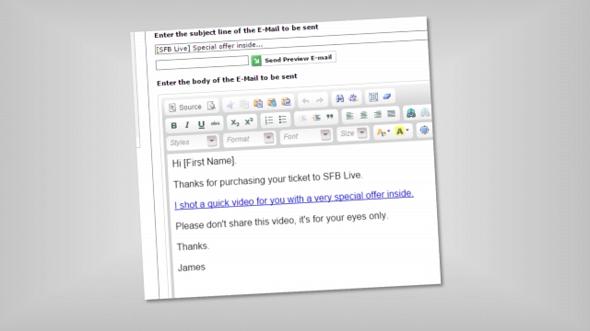















Bit of a dick move to not tell people there only ever going to get access to half the video, no I will not be sharing this video, but will be wary of your other clickbait links.
Apart from that thanks for your other great content, keep up the good work, I’m sure I’ll join when things pick up for me.
Hi Ekriuq. Sorry you feel that way. If you look at the start of the post it clearly indicates where part 2 is accessible. Everyone can access that providing they are a member. Some content is not free. It is a valid practise from hollywood movie trailers, iTunes music marketplace and Pro courses like Lynda to have preview content.
You will find this preview content is 100% free and substantial in quantity and quality as it stands. It does cost a lot to run a live event and record it – close to $100,000 is not unusual. I can choose how do deliver the content in fact I can choose not to share any of it to the public.
You can choose to come here or not.
I hope life picks up or you. Good luck
Bit of a dick move to not tell people there only ever going to get access to half the video, no I will not be sharing this video, but will be wary of your other clickbait links.
Apart from that thanks for your other great content, keep up the good work, I’m sure I’ll join when things pick up for me.
Thanks for answering, the great marketers are the good guys, you know who they are, you’re one of them, no need to get get mad I’m just a guy with his name spelled backwards.
Thanks for answering, the great marketers are the good guys, you know who they are, you’re one of them, no need to get get mad I’m just a guy with his name spelled backwards.